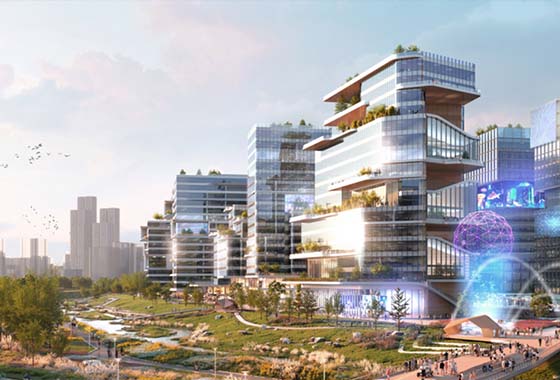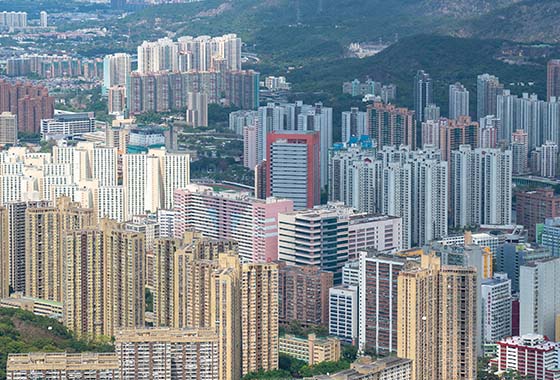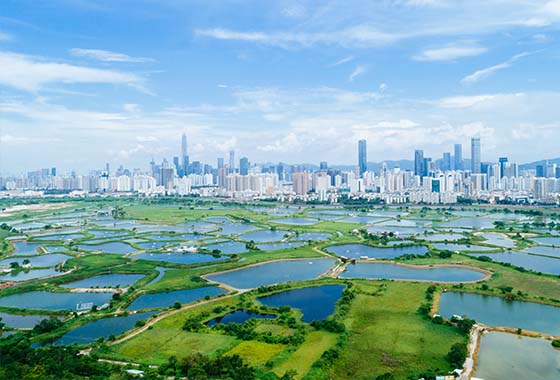Pandemic boosts demand for logistics and industrial space
This article appeared originally in the CHINADAILY on 15 May 2020.
Authors: Ryan Ip, Head of Land and Housing Research, Iris Poon, Researcher, and Jacqueline Hui, Research Assistant at Our Hong Kong Foundation.

Hong Kong people have been spending more time at home during the coronavirus outbreak, buying their household essentials online and having them delivered to their doors. This has been possible thanks to the logistics sector. Faced with a shortage of masks, many organizations have invested in mask factories, showcasing the potential of reindustrialization. The pandemic has highlighted the importance of the logistics and manufacturing sectors. However, in recent years, the government has pushed for the conversion of privately owned industrial buildings for non-industrial use. Such a policy is likely to hinder the development of Hong Kong’s logistics industry and reindustrialization.
The pandemic has highlighted the importance of the logistics and manufacturing sectors. However, in recent years, the government has pushed for the conversion of privately owned industrial buildings for non-industrial use. Such a policy is likely to hinder the development of Hong Kong’s logistics industry and reindustrialization.
A common misconception is that logistics is all about delivery. In fact, logistics companies also manage inventories for customers and provide high value-added services, including processing and packaging. Therefore, they need sufficient warehouse and storage space. Nearly half of the privately owned industrial buildings were used for warehouse or storage purposes. Even though most industrial buildings fell into disrepair and struggled to meet the requirements of modern logistics, the vacancy rate was only 6.3 percent — similar to other regions in the world. This proved that there was strong demand.
The booming economy in Asia has driven demand for cross-border trade. Hong Kong, with its established logistics sector, has benefited from this development. Between 2000 and 2017, the trade and logistics sector’s GDP rose by 81 percent, while the value of merchandise trade rose by 42 percent. Meanwhile, the supply of industrial land and private warehouses has lagged far behind — with growth rates of only 37 percent and 11 percent respectively. The Revitalization of Industrial Buildings program, launched in 2010, promotes the conversion of industrial buildings for commercial use. It reduced the floor space of industrial buildings by 6 percent over the same period. The shortage of logistics space inevitably drives up rents and weakens the competitive advantage of Hong Kong’s trade and logistics sector.
Existing industrial and storage space is not only insufficient, but much of the time was also not able to meet the ever-changing operational needs of the modern trade and logistics sector. Modern logistics distribution centers require large floor areas and high ceilings, as well as direct vehicle access and internal ramps to speed up loading or unloading, stocking and other processes. Due to the lack of such facilities in most old industrial buildings, logistics has moved to brownfield sites. Currently, about half of the brownfield sites are dedicated to logistics-related activities. Yet, due to a lack of careful planning, brownfield sites have presented problems such as increased traffic congestion, environmental pollution and noise.
The trade and logistics sector is the largest among Hong Kong’s four pillar industries, contributing one-fifth of employment and GDP. Since last year, the sector has suffered significantly, due to the China-US trade war and the spread of the coronavirus pandemic. The government needs to offer the necessary support to stabilize employment. In its policy address, the government is also committed to expediting reindustrialization and attracting high-end manufacturing industries. Reindustrialization requires space with higher ceilings, wider column spacing and greater load-bearing capacity. Therefore, increasing the supply of industrial and storage space of higher standards can boost the development of the logistics sector and high-end manufacturing — killing two birds with one stone.
The government should take into account the relevant industries, especially the logistics sector, and reindustrialization when formulating its policies on industrial buildings. For example, it can introduce more attractive relief measures and exemptions for applications to revitalize or rebuild higher-standard logistics and industrial buildings, thereby encouraging landowners to provide more industrial floor space. The brownfield phenomenon illustrated the inadequacy of industrial land policies. We hope the government has a balanced strategy for industry development and for combating the problem at its source.



